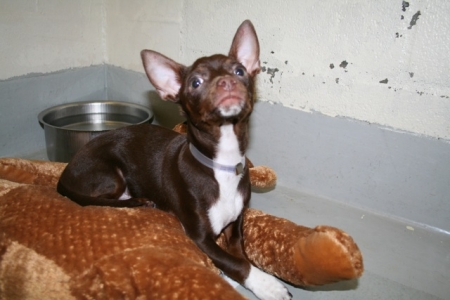

Tragedy strikes at an animal shelter
Some applicants hoping to work at an animal shelter think the job is just about endless cuddles — romping with tiny kittens and frisky puppies.
Seeing a parade of the cutest and most loveable animals is heartwarming. But that is a small part of working at a shelter.
There’s a dark side, too.
Workers on the front lines are there when cruelty happens. Often before the police and other first responders show up, animal control officers — known as ACOs — face animals who are frightened and skittish. Sometimes the animals instinctively defend themselves the only way they know how.
With force.
Human dynamics can be confusing for an animal. Human beings — who might have been responsible for torturing, maiming or neglecting them in the past — are coming at them trying to help with catchpoles, traps and nets. And with the best of intentions.
But how do they know that?
Sometimes they strike out in fear.
As people, we might technically be in charge of the animal kingdom, but we need to respect animals for who they are, and understand what motivates them if we are to co-exist safely.
That’s easier said than done. And when you are working with rescued animals every day, you can’t be perfect. Mistakes happen. When shelter staff have a bad day, it takes on different context than when an office worker makes an error.
An animal dies. Or a person gets injured, as the following email that showed up in my box this morning illustrates.
For everyone out there reading — whether you are a shelter worker, a renegade rescuer, or a citizen who might find yourself in a position to rescue an animal, or if you are introducing a new one to your household — we all need to remember to be cautious. To use common sense.
I’m guilty of being careless occasionally, as you’ll read about on this blog. We all are. I’ll keep posting stories detailing my hapless mistakes hoping someone out there learns from them.
This is the rescuers’ mantra I hear repeated often: “The rescue of an animal won’t succeed if we have to rescue you!”
Today, my heart goes out to the organization involved in this story. I know you feel defeated. Thank you for sharing it, and helping to educate all of us. Readers, please send a caring thought out to them and all the others who save animals. For very little pay and near-zero recognition, ACOs do the job we wish we had the strength to do.
Editor’s Note:
This story is about two pit bulls, but do not let that fact prejudice you against pits bulls! It’s not a surprise pit bulls are often mentioned in shelter stories because of their sheer numbers — they fill the kennels of most shelters I’ve seen. People insist on breeding these dogs despite the harbinger of doom the names carries. Many pits won’t get adopted because of the stigma that’s attached. The label “pit” is tethered to them like an anchor to a sinking man.
Companies don’t want to issue homeowners’ insurance policies to pit guardians. And one by one, cities, towns and counties are issuing ordinances targeting pit bulls for more rigorous licensing and containment requirements.
Even gentle, gorgeous pits don’t get homes. Many owners eventually just give up and turn them over to the shelter.
Incidentally, pits — which are not even a real breed, by the way — show up way down on the list of biters, after dogs like Chihuahuas, Dalmatians and Golden Retrievers. The pit bull classification usually includes American Pit Bull Terrier, American Staffordshire Terrier, and Staffordshire Bull Terrier, but another 14 dog breeds tend to get branded by the media as “pit bulls” when a hysterical reaction follows an attack.
When pits do attack people, it’s usually because human beings have used them as weapons, victimizing the dogs. The loyal, obedient nature of these dogs combined with their strength makes them the weapon of choice for vicious people, drug dealers, gang members and other criminals.
The names in the following story have been changed.

Chihuahuas are more aggressive than the average pit bull.
Shelter work can be dangerous if protocol isn’t followed
We had a dog bite at the shelter yesterday.
Nikki is new at the shelter. She came to us after becoming thoroughly discouraged as a social worker facing constant need with few results.
She has a black pit bull who has never shown aggressive behavior. She brought him to the shelter to introduce him to another pit she was thinking of adopting.
After a morning of staff training, Nikki put the pit she was interested in taking home in the exercise yard. Then – alone – she led her pit out to the yard on a leash. All hell broke loose. The dogs attacked each other. As she was breaking them up, her own pit grabbed her arm and began shaking it violently.
Staff workers heard the fight and Nikki’s screams from the administrative building and came running out. They saw that Nikki was in trouble. Arriving at the gate to the yard, they found it padlocked. The door to the shelter, only feet from the gate, was locked as well. They were trapped outside the fence as Nikki’s arm was ripped and torn apart by her dog.
Banging on the door window, they summoned for help. When someone opened the door, they were able to enter the building and race through the kennels to access the yard where the fight was taking place. Thankfully, the door leading from the kennel to the yard always remains unlocked during the day. Only the gate is secured to discourage thieves, and dogs, from opening it.
Within minutes, we had a police car, fire truck and ambulance on the scene.
One dog’s ear was torn. The other has a few scratches. Nikki went to the hospital.
Nikki’s supervisor Samantha is deeply disappointed and angry. She would like to think her officers have the knowledge to keep them safe on the streets. That belief was shattered when she learned that she has some staff members who can’t even stay safe in the shelter.
Mistakes Nikki made:
1) No one knew she was out in the yard with the dogs.
2) She was trying to introduce two very strong, potentially aggressive dogs alone.
3) She isolated herself in a locked area.
4) The only dog she had any hope of having voice control over — her own — was the one dog on a leash.
5) She was introducing the dogs in a high-stress area, the yard outside the main kennel.
I am sure Sam’s staff will learn about Nikki’s mistakes intimately.
The sad thing is that Nikki had mentioned to several people, ACOs and others, that she would be introducing the dogs after the training meeting. No one offered to help or thought to ask her who would be helping her. Nikki was sadly mistaken about how she decided to handle the introduction. But I can’t help sharing the responsibility for what happened with those who knew what she was planning. Nikki has only been around for a few months. She is still green. Everyone assumed she was knowledgeable, and offered no advice or assistance.
In our profession, we can’t afford to assume. Even at the risk of insulting someone’s intelligence, we have to ask, confirm, and find out for sure that our new people know what they are doing. So often we think people know things so we are afraid to open our mouths, even when we have a fleeting thought that they just might not know. Or a personality conflict causes us not to help someone as we would those we like or feel close to.
We held Nikki while she cried. After her concern for the dogs, Nikki was most upset about being so stupid. She was also having difficulty as she questioned why no one had told her that her plans were faulty. She was hurt on many levels.
What a harsh lesson to learn. For all of us.
Join the newsletter and never miss out on dog content again!
"*" indicates required fields
By clicking the arrow, you agree to our web Terms of Use and Privacy & Cookie Policy. Easy unsubscribe links are provided in every email.